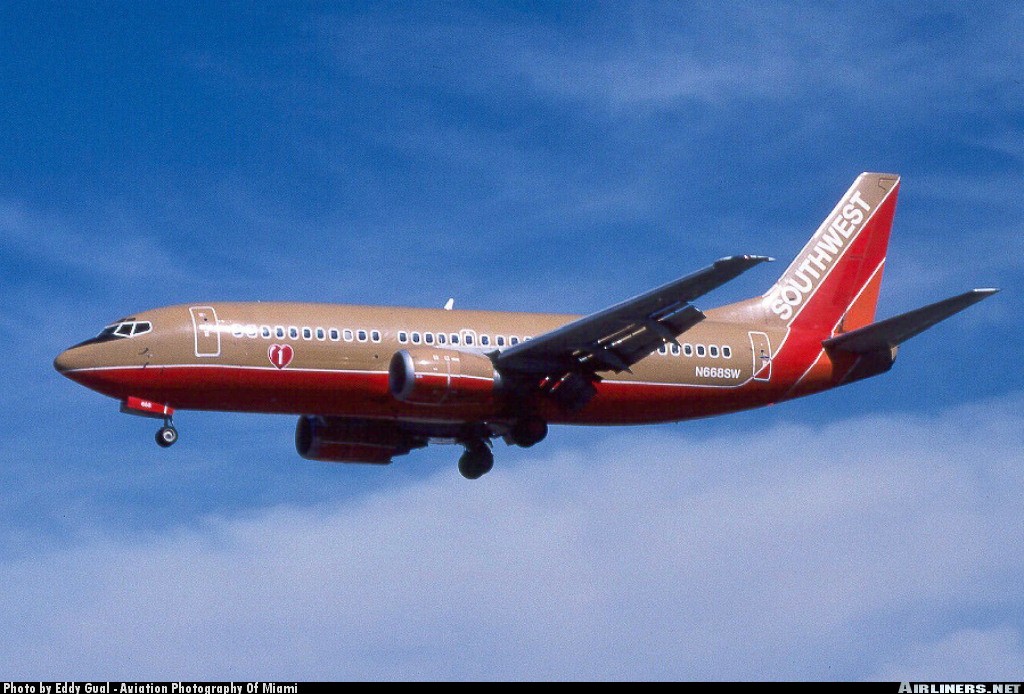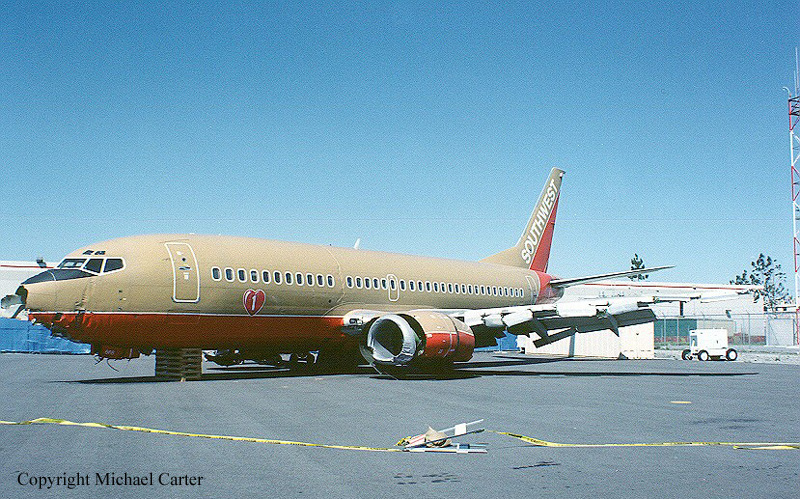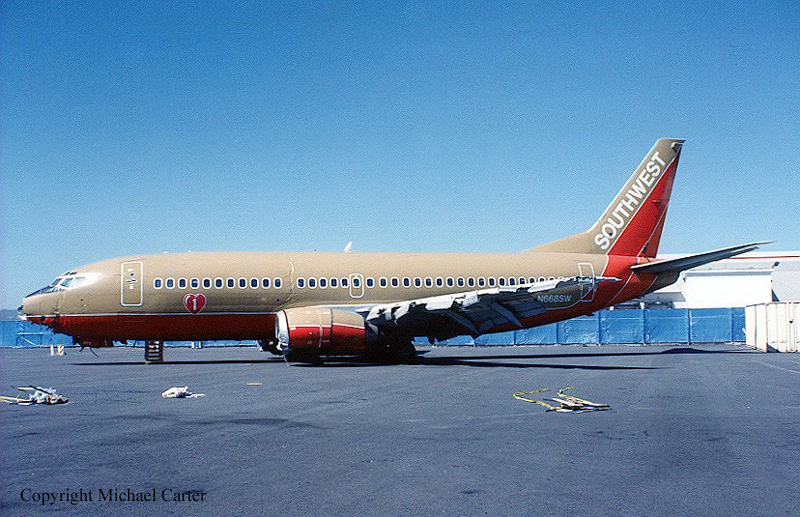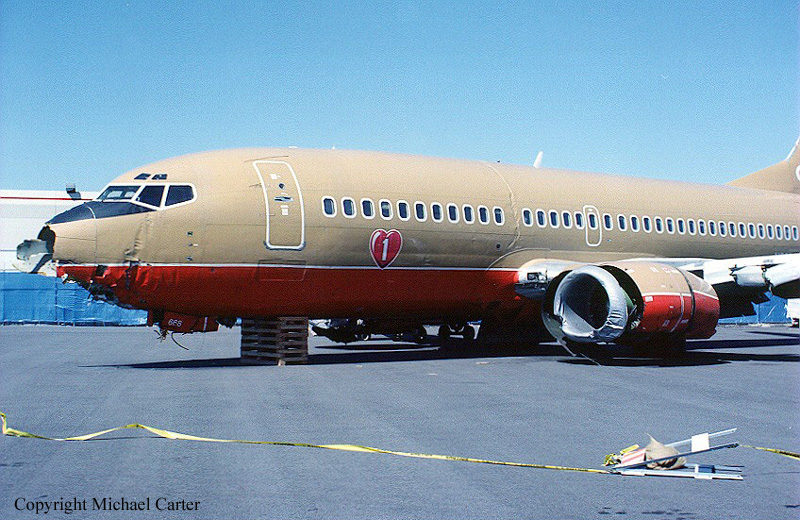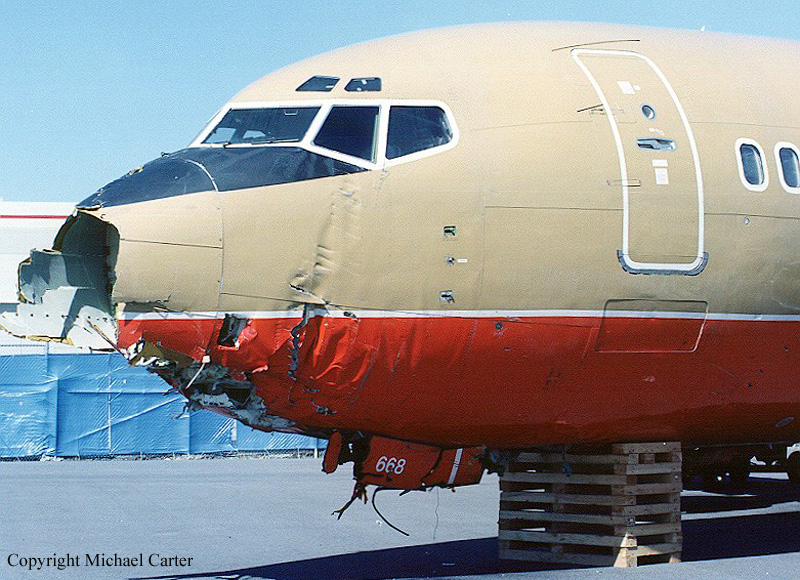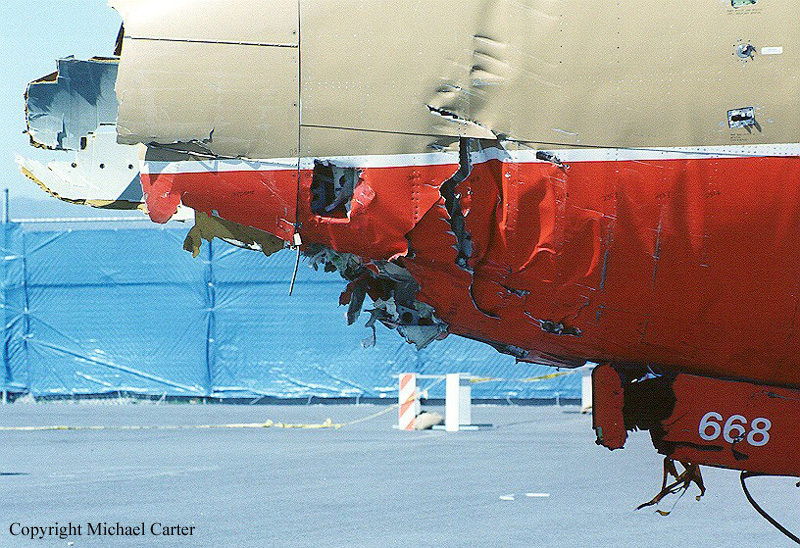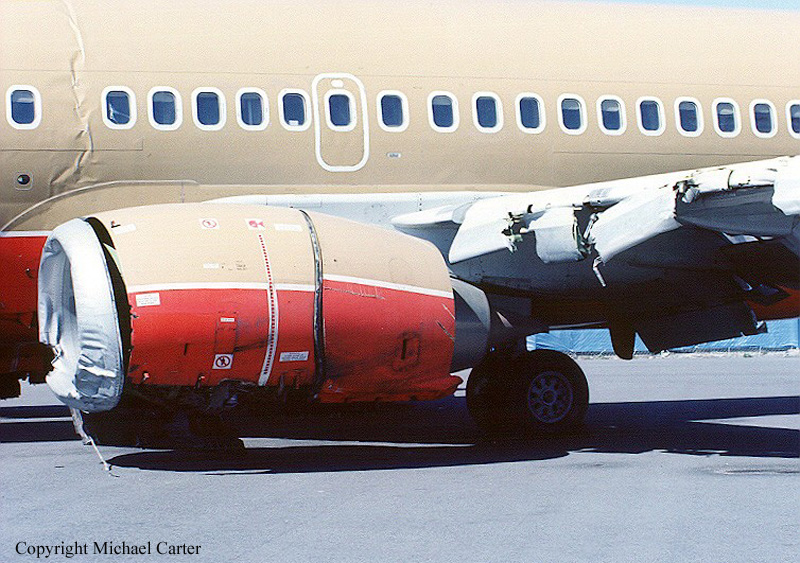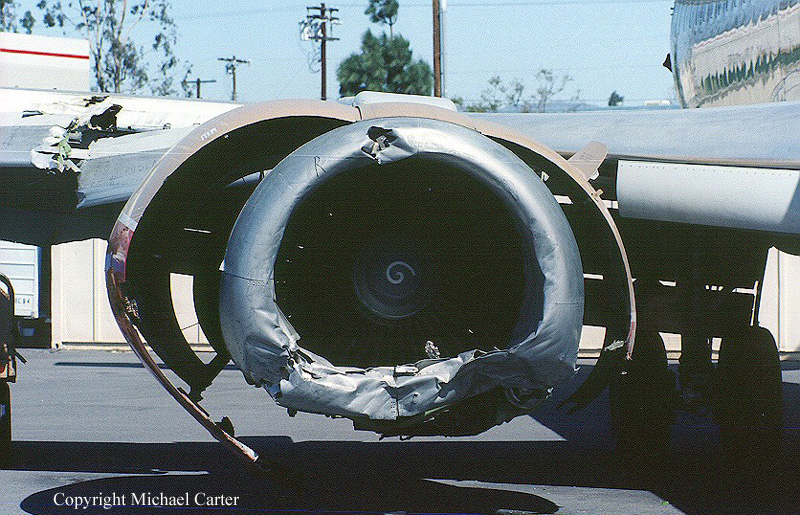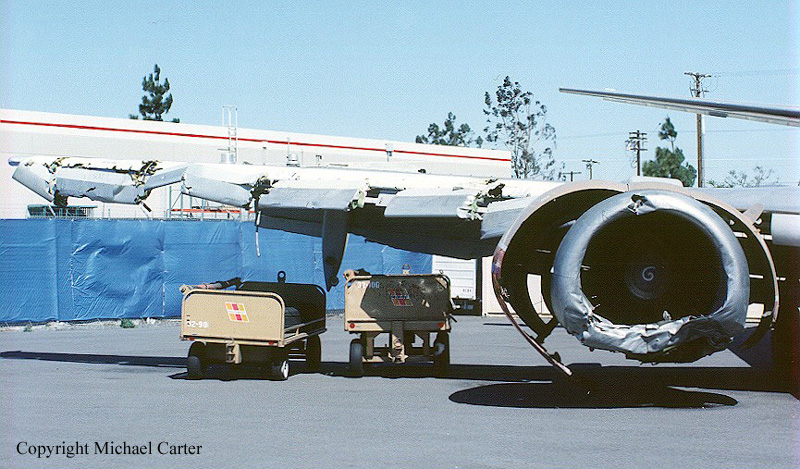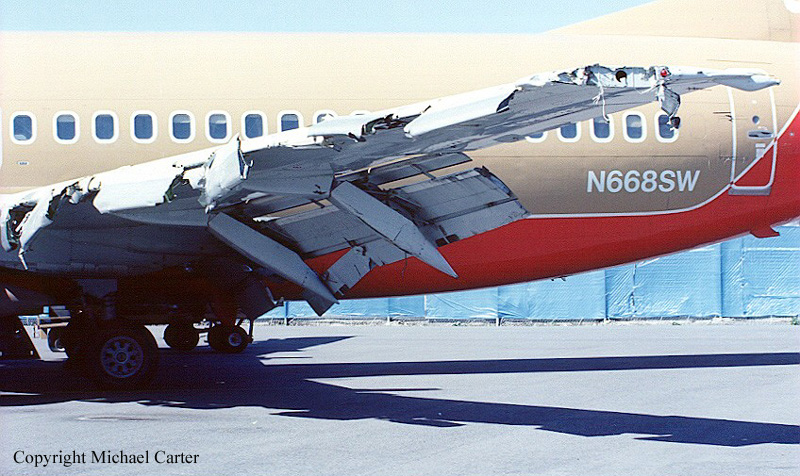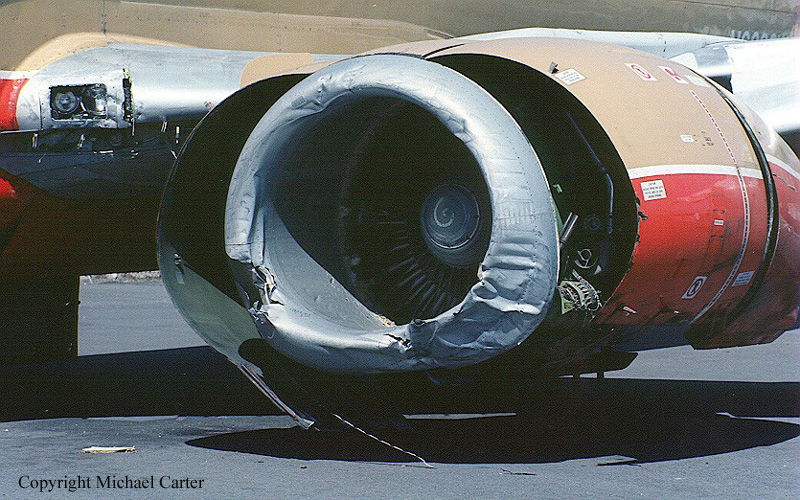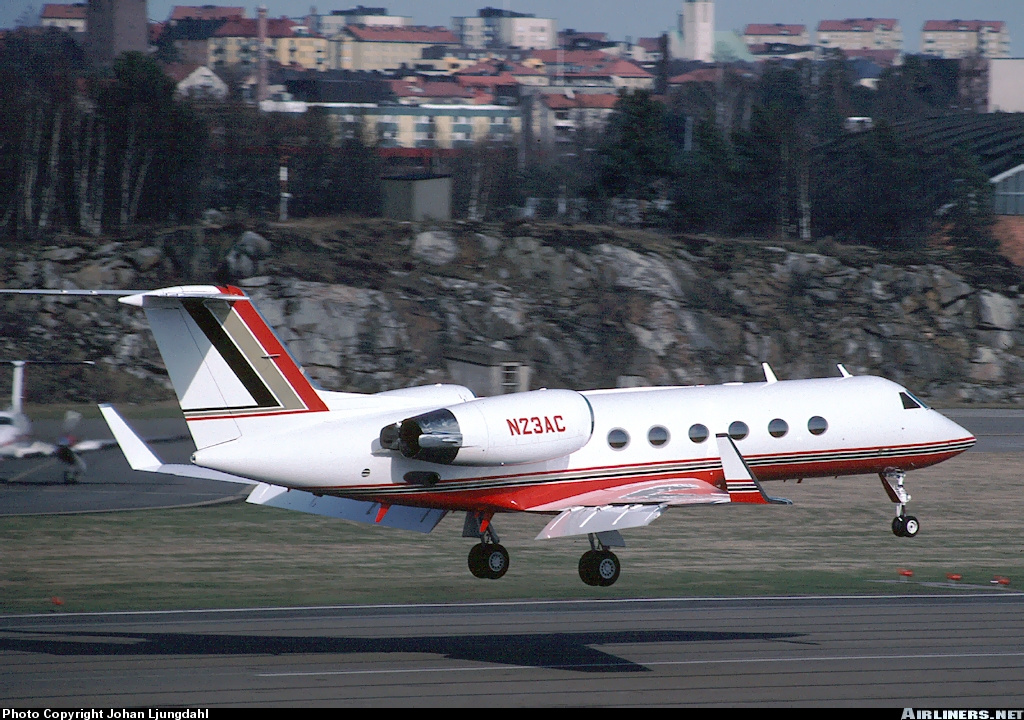Crash of a Boeing 737-3T5 in Burbank
Date & Time:
Mar 5, 2000 at 1811 LT
Registration:
N668SW
Survivors:
Yes
Schedule:
Las Vegas - Burbank
MSN:
23060
YOM:
1984
Flight number:
WN1455
Crew on board:
5
Crew fatalities:
Pax on board:
137
Pax fatalities:
Other fatalities:
Total fatalities:
0
Captain / Total hours on type:
9870.00
Copilot / Total hours on type:
2522
Circumstances:
On March 5, 2000, about 1811 Pacific standard time (PST), Southwest Airlines, Inc., flight 1455, a Boeing 737-300 (737), N668SW, overran the departure end of runway 8 after landing at Burbank-Glendale-Pasadena Airport (BUR), Burbank, California. The airplane touched down at approximately 182 knots, and about 20 seconds later, at approximately 32 knots, collided with a metal blast fence and an airport perimeter wall. The airplane came to rest on a city street near a gas station off of the airport property. Of the 142 persons on board, 2 passengers sustained serious injuries; 41 passengers and the captain sustained minor injuries; and 94
passengers, 3 flight attendants, and the first officer sustained no injuries. The airplane sustained extensive exterior damage and some internal damage to the passenger cabin. During the accident sequence, the forward service door (1R) escape slide inflated inside the airplane; the nose gear collapsed; and the forward dual flight attendant jump seat, which was occupied by two flight attendants, partially collapsed. The flight, which was operating on an instrument flight rules flight plan, was conducted under 14 Code of Federal Regulations (CFR) Part 121. Visual meteorological conditions (VMC) prevailed at the time of the accident, which occurred
in twilight lighting conditions.
passengers, 3 flight attendants, and the first officer sustained no injuries. The airplane sustained extensive exterior damage and some internal damage to the passenger cabin. During the accident sequence, the forward service door (1R) escape slide inflated inside the airplane; the nose gear collapsed; and the forward dual flight attendant jump seat, which was occupied by two flight attendants, partially collapsed. The flight, which was operating on an instrument flight rules flight plan, was conducted under 14 Code of Federal Regulations (CFR) Part 121. Visual meteorological conditions (VMC) prevailed at the time of the accident, which occurred
in twilight lighting conditions.
Probable cause:
The flight crew's excessive airspeed and flightpath angle during the approach and landing and its failure to abort the approach when stabilized approach criteria were not met. Contributing to the accident was the controller's positioning of the airplane in such a manner as to leave no safe options for the flight crew other than a go-around maneuver.
Final Report:
